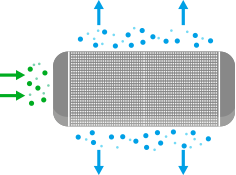Technologies used for improving indoor air quality
A suitable technical solution for every environment
The air that we breathe will be healthier when the most appropriate technology is used. More than ever these days, our well-being and health is dependent on the environmental conditions of the buildings and premises that we spend most of our time in. Opening windows is no longer a guarantee that our health is being protected and, more often than not, leads to discomfort. Knowing that we are guaranteed to breathe clean air gives us peace of mind. Also, modifying our buildings using equipment that complies with environmental and energy regulations is an investment that produces cost savings and improves quality of life.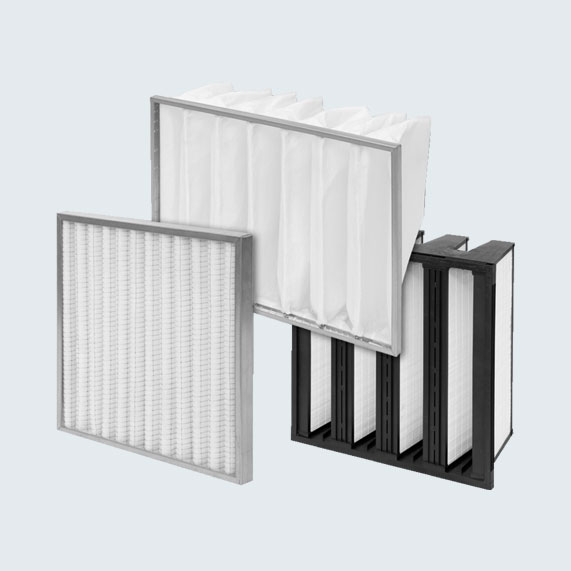
Air purifiers with HEPA or F9 filter from SODECA are ideal for alleviating solid particulate pollution problems and for the molecular elimination of air pollutants, HEPA filters are used. These purifiers act as a supplement to ventilation systems to achieve an environment that is healthier and free from harmful particles.
Recommended for:
Healthcare industry (Surgical areas), high occupancy and high mobility areas.
The system contains a mesh with glass filter (between 0.5 and 2 microns) that allows clean air to enter and retains particles that are harmful to people’s health (efficacy of 99.995%, H14, certified).
Filtration efficiency:
It is common to find filters with an efficiency based on EN 779 but nowadays, the standard that is used is ISO 16890. Both standards cover the efficiency of coarse and fine dust filters used in ventilation. The EN standard is based on particles measuring 0.4 microns and standard ISO 16890 defines the efficiency for different size particles measured at 0.3 micron intervals. For HEPA filters, efficiency is measured based on standard EN 1822.
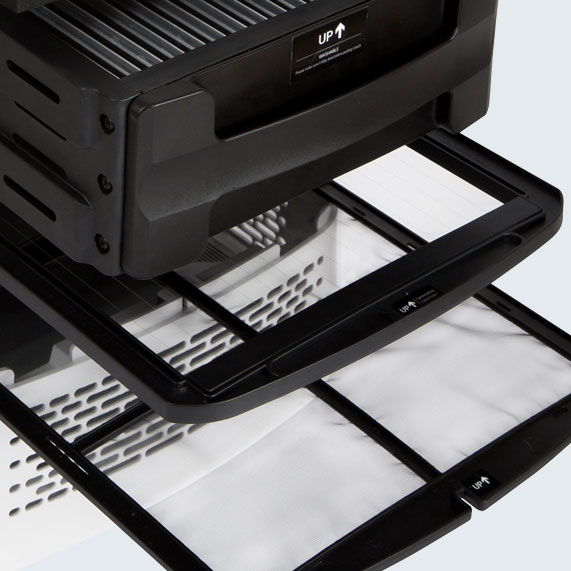
Air is essential for health. Air purifiers with Ionic technology work as ion transformers to generate clean air.
Recommended for:
Hospital, medical and scientific applications. Spaces with little mobility and variation of people, places with stale air. Closed places: offices or school classrooms, for example.
The device produces ions, generally negative ions: through special emitters, it collects electrons from the ground and transfers them to the surrounding air molecules to the emitters themselves.
Ions are produced by exposing air molecules to a very high voltage - adding or removing an electron to air particles creates negative or positive ions. The molecules acquire the charge of the same sign as that present in the emitters and, therefore, are rejected, creating a weak air current around the purifier.
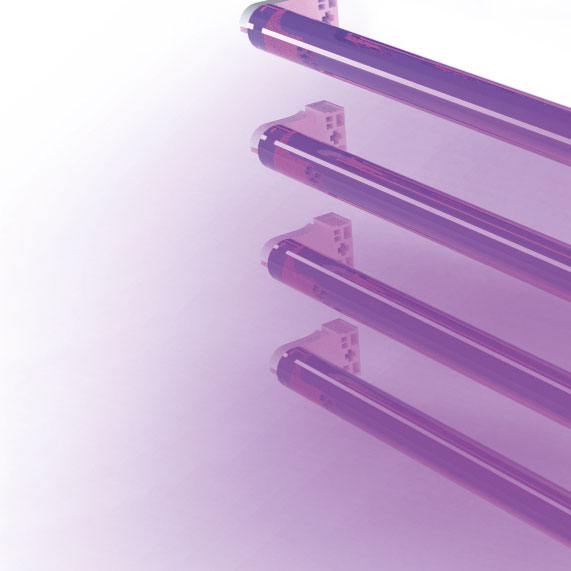
Air purifiers with UVc ultraviolet radiation technology incorporate a germicidal chamber along with filtration stages. Germicidal chambers with UVc ultraviolet light are appropriate together with other technologies to ensure that any pathogen that has not been captured by another previous method such as filtration, is finally inactivated with UVc technology..
Recommended for:
Hospital applications, medical applications and
scientific applications.
Germicidal radiation technology in the ultraviolet short wave UVc range, inactivates a wide range of microorganisms, including viruses, bacteria and fungi, by damaging their DNA.
According to a study conducted by Boston University, the use of short wave UVc ultraviolet lamps that produce a 5mJ/cm2 dose of 254 nm UVc ultraviolet light, results in a reduction of SARS-CoV-1 and MERS-CoV coronaviruses, which are similar to and in the same family as SARS-CoV-2.
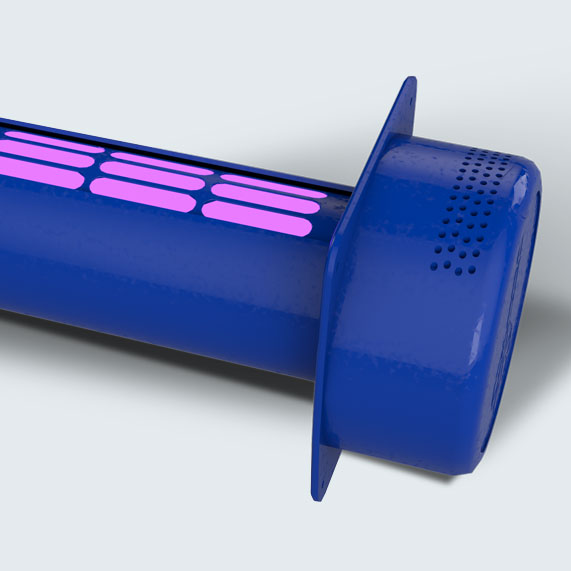
Air purifiers with PCO (Photocatalytic Oxidation) technology incorporate a germicidal tool that combines UVc ultraviolet technology and oxidation to accelerate the natural decomposition of organic matter via photocatalysis, reducing pollutants such as chemical compounds, viruses, bacteria, fungi and other microorganisms. They are also efficient at eliminating gases and odours.
Recommended for:
Hospitals, food industry, stores, offices, waiting rooms, clean rooms, libraries, etc.
These devices combine PCO technology together with positive and negative ionization of suspended particulate matter that has not been collected by the filters, grouping them and making them fall as they settle.
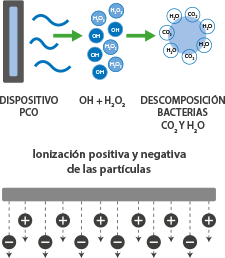
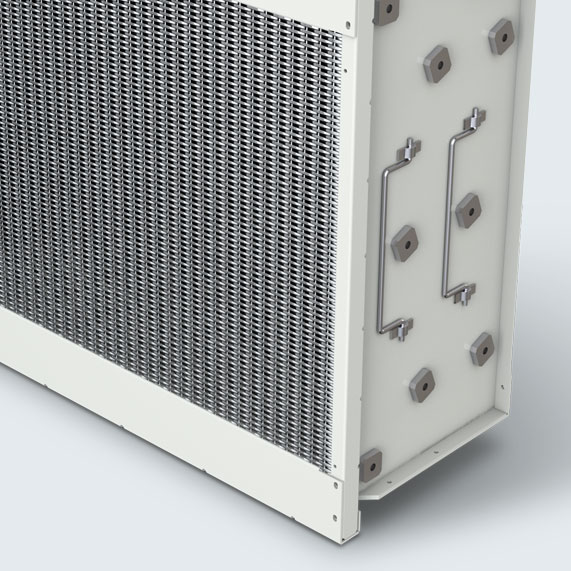
Purifiers equipped with EF electrostatic filters are especially suitable for removing polluting substances such as particles, grease, gases, odours and also bacteria.The high performance of these filters, along with their excellent ability to capture particles, ensures this equipment operates with a very reduced load loss and consequently allows it to provide significant energy savings.
Recommended for:
Industrial kitchens, hospitals, agri-food sector, factories, fast food restaurants, chemical and metallurgy industries, etc.
Particulate matter is ionized and becomes attached to oppositely charged collector cells and thereby removed from the outlet air flow.
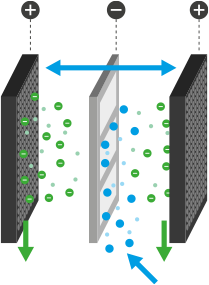
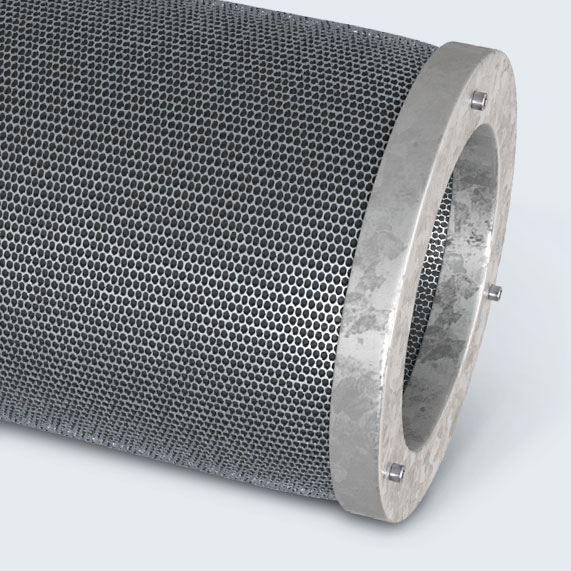
Activated carbon filters are specifically designed for treating large air flows while minimising load loss. Activated carbon filter technology is ideal for removing undesired pollutants, trapping odours, gases and allergens. They are also recommended for purifying pollutants generated by general use and occupation of premises.
Recommended for:
Commercial kitchens, airports, hospitals, agri-food industry, fast food restaurants.
Activated carbon filter technology in cartridges works by trapping pollutants and odours present in the air that passes through the filter cartridge.
